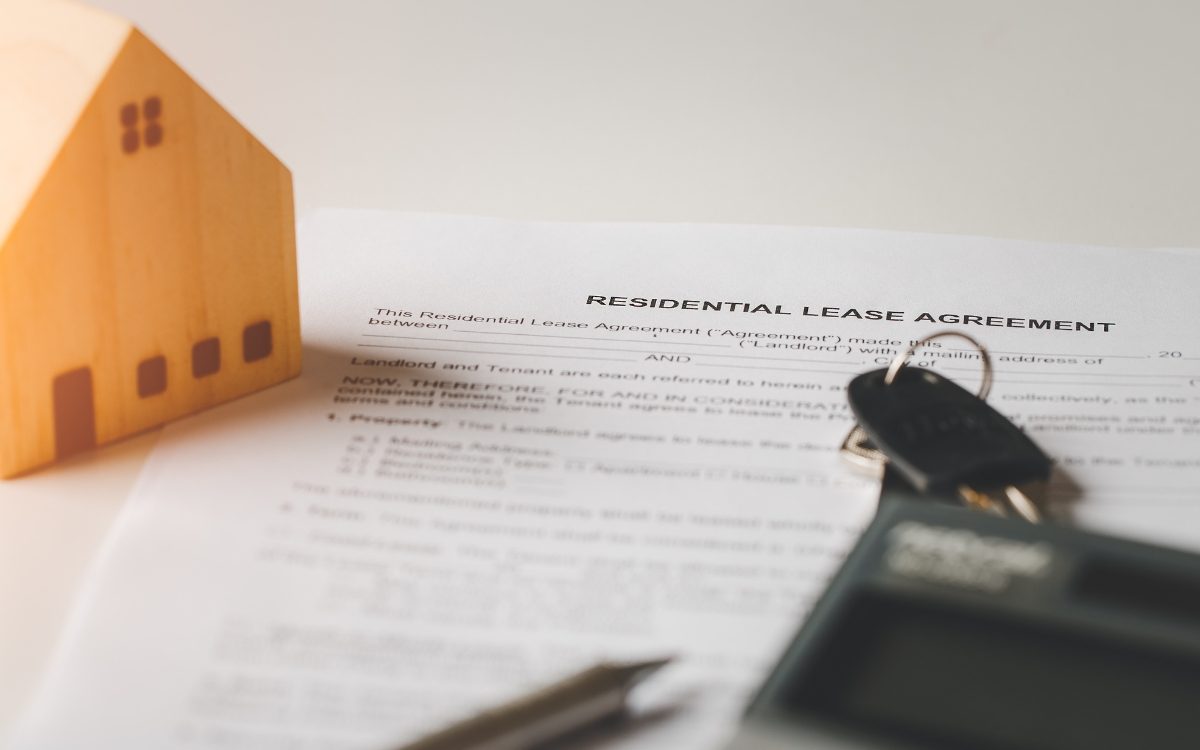Imagine you’re considering making a residential move in California because you’ve found an amazing home with everything you need.
It’s got plenty of rooms with wonderful features, and it’s in a great neighborhood right near work. You’re ready to go. The only problem? You’re currently renting a residence, which means you’ll need to break your lease if you want to relocate.
When it comes to breaking a lease in California, the process can be pretty complicated. You don’t want your move out to cost you a ton of money or leave you with legal troubles. Here you’ll learn all you need to about lease-breaking laws in California so you can weigh your options.
Once you discover the best way to break your lease, we can help you move into your new apartment or home.
Is Breaking a Lease Necessary for a California Residential Move?
Before you get completely fixated on breaking your lease, you should first think about other routes you might want to take. These options could be better for you legally and financially. They may also be less stressful to carry out and help you leave your current location on good terms with your landlord.
Consider Looking for a Subletter
One option that may be better than breaking your lease is to find a subletter, which is essentially another person you can add to the lease to fulfill the legal obligations of a tenant. They would pay you, and you would pay the landlord. Especially if you live in a densely-populated city like LA, San Francisco, or San Diego, you’ll be able to find a subletter pretty quickly.
Even though it means a little more work on your end, you can benefit financially from subletting your apartment. This option may help you avoid the fees associated with breaking a lease – especially in a state like California, where your landlord isn’t required to let you out of the lease in most circumstances.
Since your landlord may also be able to charge a subletter more, this solution could work for both of you, while also providing the new tenant with quick access to a new residence.
See if You Can Transfer Your Lease
Transferring your lease is a little more complicated than subletting at first, but it’s easier later on because you can leave permanently without obligations to stay on the lease or at the residence. However, if the person you assign your lease to defaults, you might be responsible for making their payments depending on the contract.
Because of possibilities like this, is crucial to study the terms of a lease transfer contract closely. First, you want to take a look at what local laws are, and see if the landlord or property organization has their own terms and conventions for transfer options. If the agreement is easy to carry out and the fees are manageable, transferring could be your best bet.
One final aspect to note in this situation is whether you’re responsible for finding the new tenant or your landlord is. Some people may not want to handle this process themselves. However, doing so could be faster and help you expedite your move.
Making the Call: Which Option is Better?
So which option is best? You’ve got a move to make, and a lease to exit. Should you sublet or transfer?
Making the choice comes down to personal preference. Subletting could save you money – but the risk is higher, in case the new tenant doesn’t pay. Transfers may take some time to complete, but once they’re done you’re able to move on.
But what if neither of these options works? What if you want to get your residential move in California going now? If you have no time to find a subletter or complete a transfer, consider your options to legally break the lease.
Legally Breaking Your Lease in California

In California, there are certain situations in which you can legally break your lease before it’s up without your landlord agreeing to it. According to federal and state law, you can do this in four different situations.
1. Active Military Duty
According to the Servicemembers Civil Relief Act (SCRA), you can legally break your lease if you’re on active duty and are asked to be deployed. Note that, when this happens, the period of deployment has to be for at least 90 days.
Additionally, if it’s your first time entering active duty, you can also break your lease in this situation.
2. Constructive Eviction
California has legal protections in place for you if you’ve asked your landlord to make a repair, they haven’t done it, and your home is now uninhabitable. There are several requirements for a home to be inhabitable in California:
- Unbroken windows and doors
- Weather-protected and waterproofed exterior walls and roof
- A water supply with both cold and hot water
- A water supply that is linked to a sewage disposal system
- Gas facilities and plumbing working well
That’s not all. Additional requirements that should be in place in your home include:
- Electrical lighting and proper wiring
- No garbage or pests on the grounds or in the building
- An appropriate number of garbage cans
- Well-maintained railings, stairways, and floors
- Each unit gets a locking mail receptacle in “residential hotel” type buildings
If your home has any issues with any of these requirements, then you may be able to break your lease if your landlord hasn’t made a repair. However, keep in mind that your landlord has a “reasonable” amount of time to fix issues. Usually, this is 30 days. However, you might be able to make the case for this time being reduced for more pressing needs.
3. Domestic Violence
Unfortunately, domestic violence can often be the reason why someone has to get out of a lease fast. For this reason, the state of California has put laws in place to make it possible for you to get out of your lease legally in this situation.
You can get out of this situation if you or someone else living with you is a victim of domestic violence. Examples of domestic violence according to California law include:
- Sexual assault
- Abuse promises or threats
- Harassment
- Stalking
- The destruction of personal property
- Threats or violence against pets
- Someone controlling your ability to enter or exit the home
If this is a situation you’re experiencing, there are several steps you need to take to get out of your lease. First, you need documentation of the abuse you’re experiencing. This documentation can be provided by a qualified third party like a psychologist, or can come in the form of a police report or protective order.
Note that you have to get this documentation at least 180 days away from when you’ll be moving out, and present it in writing to your landlord. Once this is done, you can move out. You’ll only have to pay for two weeks of rent, after which you’ll no longer be responsible for your lease.
4. Your Landlord Has Harassed You or Violated Your Privacy
Finally, if your landlord has harassed you or violated your privacy, you have a legal reason to break your lease. Whether your landlord is going through your mail or comes into your home at unwanted times, you should be able to leave. Different cities and neighborhoods may have different rules on this topic, so research which policies apply to your local area.
Additional Options to Break Your Lease
If you aren’t in any of the situations listed above, you still might be able to break your lease without having to pay hefty fees to your landlord. Read through your lease carefully, looking for specifics about when you’re allowed to terminate your lease before it’s up.
Chances are, there’s a clause in there covering matters like:
- Family emergencies or deaths
- Sudden job loss
- Sudden job-based relocation
In cases like these and other qualifying life events, you can get out of your lease relatively easily. With some simple legal proceedings and a relatively small lease-break fee, you could be out of your agreement and on with your California residential move.
What About the Fees?
Keep in mind that, in California, there are limits to what your landlord can charge you for the early termination fee and what the costs may relate to. First of all, they can charge you the rent that remains on the lease. Note, however, that this is only the case until a new tenant moves in. Once that happens, they can’t expect you to pay.
Additionally, they can charge you for the costs of finding a new tenant (this usually applies to advertising). Finally, they can charge you the difference in rent paid if they have to lower the rent amount to get a new tenant.
Negotiate Your Way Out of the Lease

If there aren’t any clauses in your contract that make it easy for you to break your lease, then the last choice you have is to talk to your landlord. If you’re able to demonstrate that the situation you’re in is outside of your control, you’ll be more convincing.
It helps to provide evidence of this fact, whether you’re moving due to health, family, or work reasons. This might make your landlord more likely to understand your situation and allow you to move out early.
You should also think about how you can frame the situation so that your landlord will actually want you to leave. If you move out during a popular rental time, it could be easy for your landlord to find a replacement tenant. Additionally, if you’re paying for a rent-controlled apartment, your landlord might be able to raise the rent when you move out.
Generally speaking, this type of negotiation works better with a private landlord than with a large rental company that has specific processes in place for getting out of your lease.
Let Us Help with Your California Residential Move
Now that you’ve learned about how to break a lease, you’re all set to get going. Handling your lease the right way will free you up from legal issues and minimize your expenses. It can also be a nice way to thank your current landlord if they’ve been good to you. Ending on good terms will put you on track for a good new beginning in your next destination.
Our talented moving team would be happy to help with your residential move in California. If you’ve got us handling the packing, loading, and transport services for you, you’ll have more time to talk to your landlord and tie up loose ends before you go.
We are a licensed, insured, experienced team with plenty of positive feedback. No matter how the process of breaking your lease goes, you can count on our team to make the relocation process much easier and more enjoyable.
Whatever information you need, we can help. At Best Fit Movers, we know everything about the moving process in California. To learn more about how we can help you and to get your free moving quote, contact us now.




